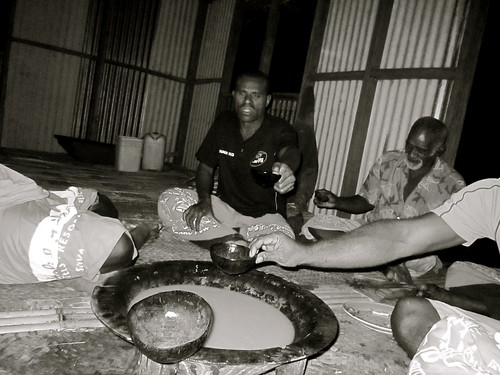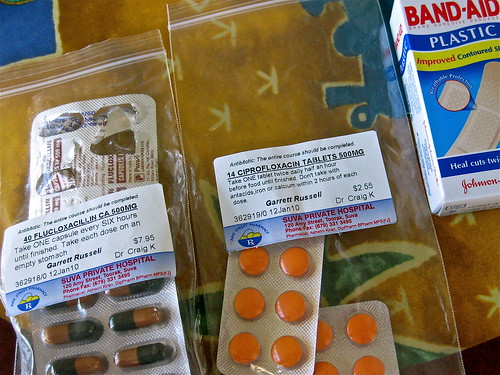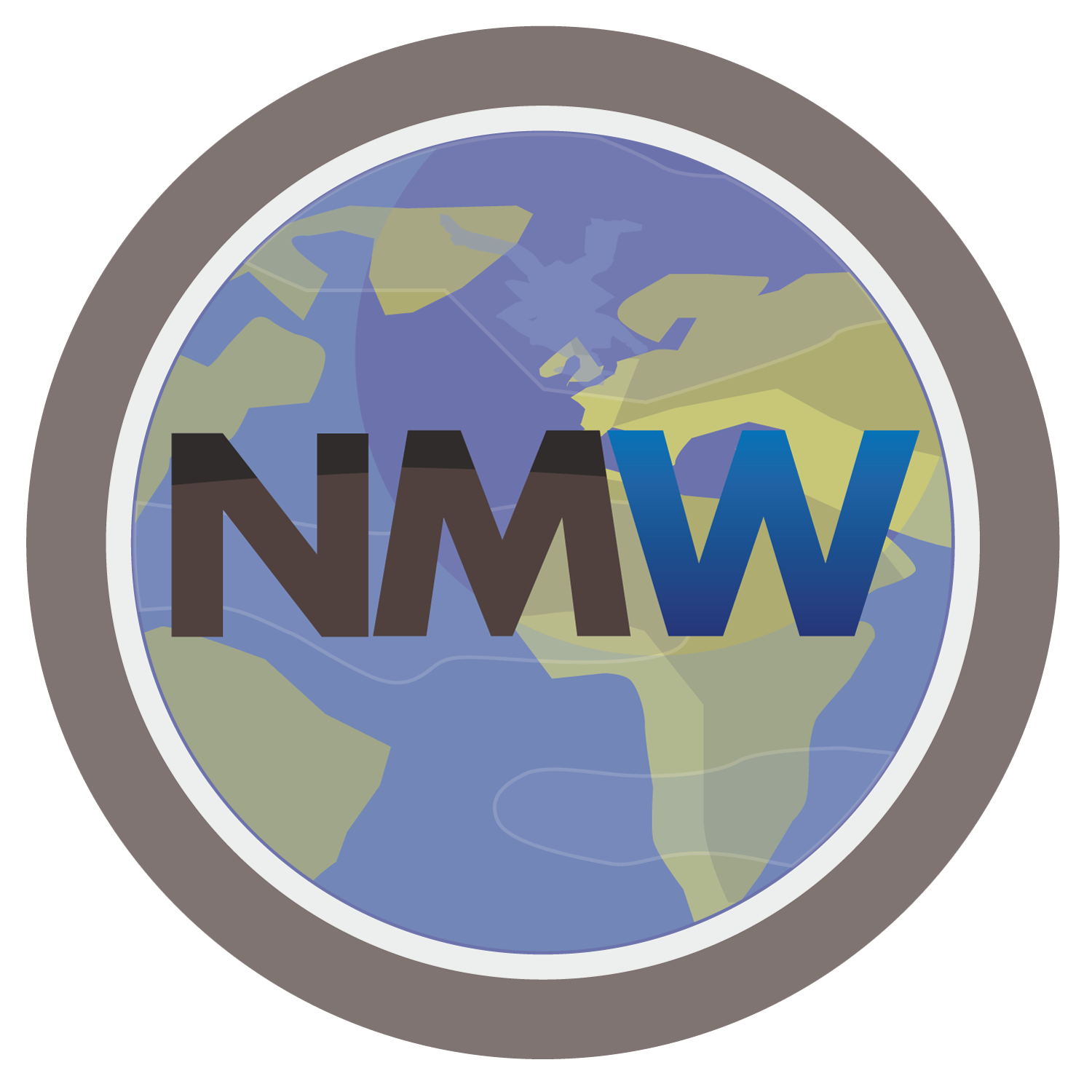Even if the only information one is exposed to is from cable TV and the local newspaper, Americans know what makes them unhealthy, and many continue to live as though they don't. 34% of us are obese, so to travel globally and point fingers at people's awareness of their own health seems little hypocritical. However, these informational resources offer very current facts streaming in from the source of the new data. I don't think Garrett and I found a science or health book in the village that wasn't printed in the 1970s or a poster that wasn't peppered with indecipherable vocabulary from a medical dictionary.
How could the Highlanders be expected to know how to care for their bodies with subpar resources and virtually no disposable income? They certainly tried, but there was one motivation most of the Fijians lacked that thoroughly worried us.
A sense of urgency.
The Man Who Wouldn't Walk Again

The night of December 23rd, a group of men were drinking kava at a Nakavika home, as they do most every night. Having probably started in the afternoon, these men were thoroughly sloshed by late night and needed to return to their homes for dinner and bed.
One man, roughly 60 years-old, had trouble navigating the difficult stairs down from the house (as they are all on stilts) without a light. He slipped and fell hip-first on a rock, all his body weight crushing the impacted bone to the point of severe injury.
He was brought back into the house, left to wallow in the corner while the rest of the men continued drinking. They probably asked if he was okay and offered him a bowl, but since no one knew what to do, he was left unattended.
The next day, Christmas Eve, Garrett was called to the scene, being the most medically savvy person in the village at the time.
I was called to the house, expecting to see a young person with a charlie horse, and instead saw an elderly man with an incredibly swollen lower behind - his right hip the size of a melon. Unable to put any pressure on his leg, he cringed when I touched his right side.
By comparing the symmetry of his hips and the amount of pain he was in (there were tears) as well as the large amount swelling, it couldn't have been just a simple bruise. This man had seriously dislocated, broken or damaged bone and/or tissue. I gave him extra strength Advil, rubbed some icy hot on the area, and left him overnight to see how he felt in the morning. I also asked the family and friends around him to pay attention and help him with whatever he needed and to come and get me or bring him down if he did not get better.
Garrett felt helpless. He could only hope the man's family would sense his pain and make a move toward helping him recover, instead of leaning toward another bowl of their favored narcotic.
We left on the 26th of December for our vacation and returned on the 4th of January to news of the man just being transported to the next village for a good rub down. Instead of taking care of this man's ailments, the village continued to lounge for the week of Christmas - daily communal luncheons followed by mass amounts of kava, and sometimes binge alcohol, consumption - and let him suffer for twelve days.
Where the Medicine and Mentality Fall Short
What most Highlanders, and probably most villagers in Fiji, do when their bodies fail them is make a visit to the local masseur. With a moderate knowledge of the human body, this man uses his "gift" to help broken bones look right from the outside.
In addition to this treatment, Fijian medicine is applied or utilized, in the form of topical rubs, infused teas, or other herbal remedies from nature. And though I found some of their methods to be adequate for sore muscles and paper cuts, I think most of us with access to even mediocre health care know rubbing your bones back together isn't what's best for your body in the long run. And boy, must that hurt...

I tried to calculate the cost of traveling from the village to Suva in order to visit the hospital for any particular problem. And since the village told me their care was free, that factor cut out a big question mark in the equation, as does free lodging and food supplied by relatives in town. Altogether, to visit a bonafide doctor could cost someone from Nakavika as little as $15 USD (this is by no means a researched and accurate estimation but the minimum for foreseen costs).
Most Highlanders don't have that kind of money to throw around. However, the communal mentality of the village, the low costs of living and creating more crops, and the lack of materialism does lend to their ability to pay for the care they absolutely need while also having their necessities covered. Most wouldn't see this medical cost to be pivotal.
Either pain is relative, non-Fijian medicine is untrustworthy, or matters of health are managed a different way (maybe spiritually); what shocked us the most was the sense that the non-suffering didn't pity the suffering. And what was more interesting was that this standard of thought wasn't universal. If we hurt ourselves, everyone stopped what they were doing to tell us how they wished they could take our pain and suffer it themselves, instead.

To us, it seemed a matter of respect. Why was it that when family was in pain, there was little to no urgency? And it wasn't that they respected us more than their kin; I think they believed our pain tolerance was much lower, which could very well be true. Regardless, we felt for those who talked of legitimate chronic pain or painful injuries, because they didn't always get the understanding they begged for.
Garrett couldn't help but note the irony of the broken hip situation:
It began with too much kava, got worse because of kava, and will probably be dependent on kava to mask the pain for the rest of his life.
The Love for the Quick Fix
The South Pacific is known for its lackadaisical lifestyle - steady work for a short spurt in the day and a long, drawn-out recovery period - and this factor, in many respects, is something to adopt and treasure about these cultures. But this also means the Fijians often take the easy way out. When the villagers weren't forced to listen to someone's pain, they didn't. And when they had an issue themselves, they sought the easiest path to the end.

It was universally known we brought first aid to supply the village - a point we hoped they would know but not abuse. Often, Garrett was approached about a pain or illness that needed to be medicated. When he first offered exercises and changes in lifestyle that would help the problems, they usually didn't care. But when he offered a pill or supply, smiles stretched across faces.
They were enticed by the power of medicine, not by the power of knowing your body and finding the source to fix the problem. They didn't know the basics. We wanted to teach the basics about health, then provide the medicine.
Our health initiatives focused on preventative while we also attended to the reactive, with caution. We hoped our words would strike a chord in the mothers, athletes, and farmers whose livelihood and happiness depended on their bodies. And in our struggle to educate, we realized how steep up an uphill climb we were facing against tradition and mentality.
We still don't know if that man will ever walk again, but what's nearly certain is that his pain will be chronic and only placated by that which brought him down in the first place.
We'd love to hear your comments on this topic, so please share this with friends and add to the conversation. Are you keeping up with our stories from Nakavika? Don't miss a tale!
